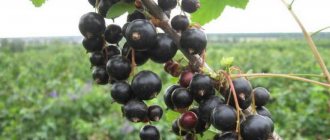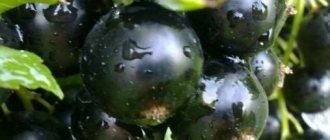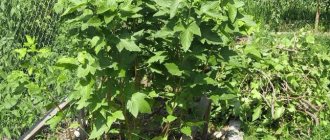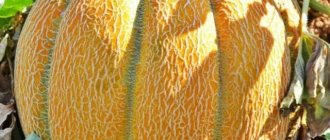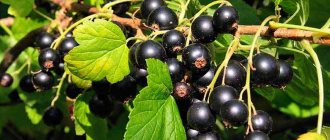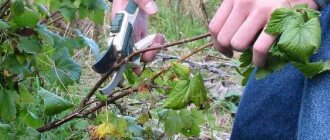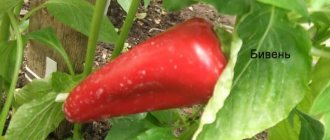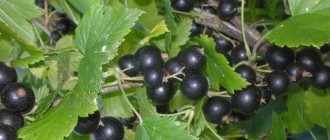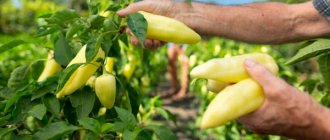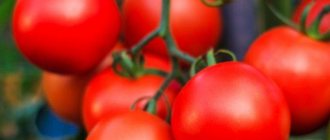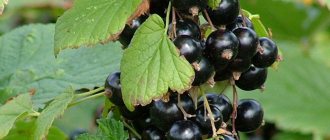Description of the currant variety Bagheera and photos of berries
There is hardly a garden in which black currant bushes do not grow. Among the many varieties of this plant, there are also those that not only delight with a tasty harvest, but also decorate the garden. We will talk about black currant Bagheera. Possessing excellent frost resistance, Bagheera bushes shed their leaves later than usual varieties, which allows them to be used in landscape design as hedges and group or single plantings.
Black currant Bagheera not only pleases with a healthy harvest, but also decorates the garden
Bagheera black currant is not new. The variety was born at the All-Russian Research Institute of Horticulture named after. I.V. Michurina. The Scandinavian blackcurrant variety Bredtorp and the Belarusian Minai Shmyrev were chosen as parent forms. In 1986, Bagheera was accepted for state testing, and having successfully passed it, it was entered into the State Register in 1994.
Regions suitable for growing Bagira currants are the Middle Volga, Volga-Vyatka, West Siberian, Ural and East Siberian, including the Krasnoyarsk Territory, Kemerovo, Novosibirsk and Omsk regions. From the above list it is clear that the variety is zoned in places with a not very mild climate.
Bagheera bushes are medium-sized, up to 1.5 m, semi-spreading, covered with dense foliage. The pubescent young shoots are of medium thickness and grow straight. Over time, the branches become woody and acquire a yellowish color. Slightly deviated from the shoot, single buds are shaped like a slightly elongated egg with a pointed tip. The kidney scales are golden brown. The five-lobed and rather large dark green leaves have a smooth matte surface. The petiole is of medium length and thickness. The goblet flowers are not too large.
Bagheera black currant bush is semi-spreading, heavily leafy
The brushes, which are medium in size and density, grow from 3 to 6 cm in length. The knot often has 2–3 hanging brushes, each of which carries from 4 to 7 berries. The fruits can be safely called large, their weight ranges from 1.1 to 2.3 g. The shape is round or flat-round, one-dimensional. The skin is black, shiny and not very dense, but at the same time quite durable, which allows the berry to be transported over long distances.
Blackcurrant Bagheera - large-berry variety
The pulp, delicate in consistency, contains a small amount of seeds and has a pleasant aroma. The taste is dominated by sweetness, the sourness is barely perceptible. Taster rating: from 4.5 to 5 points.
Agrotechnical characteristics of the variety
Blackcurrant Bagheera is an excellent variety that has inherited only the best qualities from its parents.
- Bagheera is a medium-late ripening variety;
- The variety’s early fruitfulness is striking—a year or two after planting, the first harvest can be harvested. Fruiting is stable;
- Bagheera's yield is good. One bush bears up to 4.5 kg of fruit;
- the variety has a high percentage of self-fertility (70%), which allows you to get a good harvest regardless of weather conditions during flowering and the presence of pollinators. But to improve the quality and quantity of berries, it is a good idea to plant nearby bushes that bloom with Bagheera at the same time and are suitable for cross-pollination. These include Venus, Raisin, Green Haze;
- berries that perfectly retain their shape, do not leak juice and do not wrinkle, excellent for industrial use;
- can tolerate drought and frosts down to -320C;
- has average resistance to powdery mildew, relatively resistant to anthracnose. May be affected by rust. Among the pests, the spider mite is not terrible, but the kidney mite can become a threat to the crop.
Advantages and disadvantages of the black currant variety Bagheera - table
| Advantages | Flaws |
| Drought resistance. | Has average immunity. Affected by rust, susceptible to kidney mites. |
| Winter hardiness. | |
| Precociousness. | |
| Self-fertility. | |
| Dry fruit separation. | |
| Handles transportation well. | |
| Perfectly stored. | |
| The berries have universal uses. |
Advantages and disadvantages
Bagheera currant has been popular among gardeners for more than a quarter of a century due to its following advantages:
- Resistant to various unfavorable growing conditions and unpretentious in cultivation.
- The relative large-fruited berries and their wonderful taste characteristics.
- Not bad, above average, yield.
- Excellent keeping quality and transportability.
The main disadvantage of this variety is considered to be its vulnerability to bud mites and insufficient resistance to some fungal diseases. However, with the modern variety of choice of protective drugs, these shortcomings can be successfully overcome.
Landing Features
To ensure that the work of planting black currants is not in vain, you need to take into account some features.
What time to plant seedlings
Can be planted in autumn or spring. The planting season is not of fundamental importance; the main thing is to do it within a certain period.
- In the fall, Bagira seedlings should be planted in early October so that the plant has time to successfully adapt. Until spring, the currants will take root and, with the onset of warmth, will actively begin to grow;
- In the spring, you need to be in time before the sap begins to flow and the buds swell. If you miss the deadline, the seedling will take a long time to take root.
You can plant currants in autumn and spring, the main thing is not to miss the deadline
Planting site and suitable soil
When choosing a site for planting Bagheera currants, you need to take into account the fact that in one place the variety will grow and successfully bear fruit for more than 15 years. Sunlight is important for the plant, but midday sun can cause burns. Therefore, planting shrubs in light partial shade would be ideal. Avoid heavy shading - in such places the berries become sour and the bushes become very elongated. Usually currants are planted along hedges and fences. This is done for the purpose of protection from winds, especially northern ones. In winter, snow accumulates in such places, which will protect the currants from freezing.
Among the soils, Bagheera prefers slightly podzolized, loamy and sandy loam compositions with a neutral or slightly acidic reaction. The soil on which black currants will grow must be nutritious and loose.
The currant root system has a superficial location - it penetrates only 20–40 cm deep into the soil and is very afraid of stagnant water. The groundwater level is no higher than 0.5 m from the surface.
Avoid planting Bagheera in swampy lowlands. Also, you should not plant in areas where related plants - gooseberries and currants - previously grew. Toxins that are unfavorable for growth can accumulate in such places. Bagheera grows poorly on sandy, saline and heavy soils.
The yield of black currant depends on the right location
Preparing the site for planting
If planting is scheduled for spring, you need to prepare the soil and dig a planting hole in advance - in the fall. The preparatory period for autumn planting can begin a month before the planned action.
- The selected area is leveled, weeds and plant debris are removed.
- They dig up the soil well and break up large clods of earth.
- On a leveled surface, outline the dimensions of the planting hole - 0.5 m in circumference. They dig 40–45 cm deep. The top fertile layer of soil is put aside.
- To fill the hole, add to the deposited soil: 3–4 kg of well-decomposed manure, 120–150 g of granulated superphosphate, 150–200 g of ash, 25–30 g of potassium sulfate. Instead of these fertilizers, you can add 200 g of complex mineral additives to organic matter. The composition is mixed well and placed in the pit.
- Pour out 2-3 buckets of water so that the soil compacts and does not sag after planting.
If the soil in the selected area is highly acidic, liming is necessary. For every 1 m2 of digging, 400–500 g of dolomite flour or burnt lime are added.
Considering the size of the Bagheera currant bushes, the planting pattern should look like this - the distance between bushes is from 1.2 to 1.5 m, in row spacing - at least 2 m.
The hole for planting currants must be dug in advance.
Selection of planting material
Only healthy planting material can guarantee the further healthy development of the plant and stable yields.
- For planting, it is best to select young 1–2 year old plants;
- the root system is powerful and strong, at least 20 cm long. 3–4 lignified branches must be covered with a fibrous network of additional roots. Rotten or damaged areas are not acceptable;
- the above-ground part should consist of 1–2 branches 30–35 cm long. The shoots should be elastic, covered with an elastic bark that is not damaged.
To be sure of the chosen variety, you should buy seedlings only in specialized centers.
Step by step planting process
To properly plant black currants, you need to know one secret - the seedling must be placed at an angle of 450, and the root collar is buried 6–9 cm into the soil. Thanks to this, the young plant will be able to quickly grow additional healthy shoots and form a strong bush.
- Part of the soil is removed from the hole.
- The seedling is placed in the planting hole at an angle and the roots are straightened.
- Gently cover with soil, shaking slightly so that the soil fills all the voids between the roots. At the same time, you can spill water. One bush will need 3-4 buckets.
- After planting, the soil around the bush is carefully compacted and mulched.
Experienced gardeners radically prune the seedling after planting, leaving stumps 5–10 cm above the ground. Such pruning will delay the appearance of the harvest by a year, but will help to form a powerful and healthy bush.
When planting, the currant bush is tilted at an angle of 45 degrees.
Advantages and disadvantages
The Bagheera variety is popular among gardeners due to its unpretentiousness and high taste.
When ripe, the berries have a rich, black color.
pros
- drought resistance;
- high taste qualities of the crop;
- large-fruited berries;
- winter hardiness;
- good, stable yield;
- fruiting from the first year;
- excellent transportability, keeping quality;
- self-fertility;
- resistance to adverse weather conditions;
- precociousness;
- unpretentiousness in cultivation.
Minuses
- the variety is not sufficiently resistant to fungal diseases;
- there is a high probability of getting burns under the scorching rays of the sun;
- vulnerable to kidney mite.
Currant bush care
The unpretentiousness and hardiness of the Bagheera blackcurrant variety does not mean that the plant can be left without care. Carrying out simple agrotechnical measures will allow you to maintain the natural immunity of the plant and obtain generous harvests.
Pruning - formative and sanitary
Pruning is one of the most important maintenance techniques. The formation of the bush begins immediately after planting - half the length of the shoots or even 2/3 of the seedling is cut off. And then you need to apply the following scheme.
- In the spring of the second year, skeletal branches form. To do this, choose 3–5 of the strongest shoots. All others are deleted. Around mid-summer, pinching is carried out on skeletal branches - by 2 buds, no more. This procedure will encourage the formation of young fruit branches and new shoots.
- In the 3rd and 4th spring, 3–6 of the healthiest and strongest shoots are selected from the total mass of grown zero shoots, the rest are cut off. The tops of last year's branches are shortened.
- As a result, after 5 years, a strong bush is formed, consisting of 3-4 shoots of each age, but not older than 5-6 years.
Proper pruning allows you to get a healthy, unthickened bush.
Sanitary pruning can be carried out in parallel with formative pruning. Sick, broken, dried shoots must be removed. They cut off the branches near the ground so that there is no stump left.
Recent Entries
Lilac perennials that are beautiful, compact and do not crowd out other plants Why when buying seedlings you should not take the sellers’ word for it and how to determine the age of the plant using 3 signs Tomato seedlings have turned purple or whitish: why the color has changed and how to save the plants
Anti-aging pruning is indicated for fruit-bearing bushes 5 years old and older. Old branches no longer bear fruit, but they take away the plant’s strength, so they need to be removed. At the same time, you need to cut out young weak shoots that have practically no fruit buds.
It is best to carry out a sanitary and rejuvenating procedure in the spring. But if you didn’t make it on time, then you can postpone pruning until the fall, waiting until the end of the harvest.
How to properly prune blackcurrant bushes - video
Watering
Bagheera currants can survive short periods of drought. But it’s not worth the risk - only timely watering will guarantee a decent harvest.
Black currants need to be watered frequently and generously, but not excessively. A prolonged lack of moisture leads to a slowdown in the growth of young shoots and affects the quality of the crop. The most important periods for watering are:
- The end of May, when active growth of shoots occurs.
- Early July, when the berries turn brown.
- Immediately after harvesting. During this period, buds begin to form for the next season.
- The end of September, but provided that the autumn is dry.
The irrigation rate per 1 m2 will be 4–5 buckets of water. It is very important that the soil is moistened 40 cm deep. If the weather is very hot or windy, the volume of water needs to be increased slightly. The number of waterings will be 1–2 times a week, but precipitation must also be taken into account.
It is best to start moisturizing currants in the evening.
Top dressing
Since Bagheera black currant can grow in one place for quite a long time, it will need additional feeding.
If all the necessary nutrients were added during planting, then they will be enough for 2 years. In this case, you can start feeding currants in the 3rd year.
Application of fertilizers for black currant Bagheera - table
| Fertilizers | Application rate | Application time |
| Urea | A young plant requires up to 50 g per bush. | Apply in early spring. |
| For plants older than 5 years, the dose is reduced. Now it ranges from 20 to 40 g. | The application time also changes. Plants should receive 2/3 of the fertilizer in early spring, the rest after flowering. | |
| Organic | After watering, organic matter will not only fertilize the bush, but also serve as mulch, protecting against excessive loss of moisture. From 5 to 10 kg are applied under the bush. | During the summer. |
| Potassium sulfate | 10–20 g is enough for a bush. | In autumn, after harvest. |
| Superphosphate | 50 g for each plant. |
Fertilizers containing nitrogen cannot be applied in the autumn. They can provoke the growth of young shoots, which, without having time to become lignified, will suffer from frost.
The organic matter that blackcurrant bushes are fed with is also a mulching agent.
Weed removal and loosening
Currants must be kept clean. Timely removal of weeds will rid the bushes of unwanted pests.
In addition, the soil under the bushes and between the rows must be constantly loosened so that it remains air- and water-permeable. This procedure should be carried out at least once a month during the entire growing season. Every autumn, the soil around the bushes and between the rows must be dug up to a depth of 15 cm.
Shelter for the winter
Bagheera currants can tolerate frosts of -300C. Natural protection in the form of snow cover is quite enough to protect against the cold. But if the winters in the region are snowless, then you need to take care of shelter. To do this, tied bushes are wrapped in any covering material that allows air to pass through.
If you are afraid that the winter will be snowless, then you can cover the blackcurrant bushes for the winter
Currant care - video
Reviews from gardeners
Gardeners in general are usually satisfied with the Bagheera blackcurrant variety, although it can perform differently in different conditions.
Yaroslav, 55 years old, Pskov region
Bagheera currant belongs to the relatively old varieties of Soviet selection. I myself brought it back in the late eighties directly from a nursery located in Michurinsk, together with several other varieties of currants - Black Pearl, Green Haze and Constellation. I consider all varieties worthy for cultivation in the garden. They have stood the test of time well and have proven themselves to be their best over all this time. I would especially like to emphasize the high self-fertility of Bagheera, its precociousness, dry detachment and the formation of bunched ovaries. I consider its only drawback to be its susceptibility to tick damage - but it is quite possible to fight with this beast, there are worse things.
Oksana, 39 years old, Moscow region
I grew Bagheera for several years, but then I decided to give it up. The berry turned out to be quite large in size, but there are much larger varieties. The taste, of course, was not bad, but the yield was average. About 7-8 berries ripened in the cluster. It showed instability to the bud mite and had to be treated several times in the spring with special preparations. I got powdery mildew only in a very rainy summer, so we can say that the resistance is average. But maybe in other conditions she will behave differently.
Alexandra, 49 years old, Ufa
I am very pleased with my Bagheera, she did not disappoint me. With good care, the bush gives stable and high yields. The berry is large and very tasty - you can eat it straight from the bush. Even in dry seasons, when I did not have the strength to water it additionally, it produced good harvests. True, I have never noticed bunched ovaries on my bushes. But how elegant they look in the fall, when all the foliage from other bushes and trees has long fallen off, but they stand beautiful, with green foliage and really decorate the area.
Diseases and pests of crops
To ensure that currants do not have any problems with possible diseases and pests, more attention should be paid to preventive measures. Also, do not neglect the rules of care - a well-groomed plant always has good immunity.
Diseases characteristic of Bagheera black currant - table
| Diseases | How do they manifest themselves? | Prevention | Control measures |
| Rust | On the affected leaves, rusty-colored pads appear on the underside; only small spots are visible on the top of the leaf. The disease leads to leaf drop and reduced yield. |
| Before the flowering period, treat with 1% Bordeaux mixture (100 g per 10 liters of water) or copper sulfate (35 g of 95% preparation per 10 liters of water). |
| Septoria | The leaves of a diseased plant become covered with small round or angular brown spots. Later, a dark border appears around them, and the spots themselves become almost white. If the infection is severe, the leaves may fall off almost completely. Bush growth slows down. |
|
|
| Terry | Deformed leaves appear on currants infected with terry. Their shape becomes not five-bladed, but three-bladed. The veins become coarser. The foliage color darkens. Young shoots stretch out. The flower brush becomes thinner, and scales appear instead of flowers. |
| Spray diseased bushes with a 1% suspension of colloidal sulfur. The first treatment is carried out during the period when ticks emerge from the affected kidneys. The second - after 10 days. If the disease progresses, 2 more sprayings will be required - after flowering and harvesting. |
What symptoms can you use to recognize the disease in time - photo gallery
Leaves on currant bushes affected by rust are covered with orange growths
Septoria blight can lead to almost complete loss of foliage
Terry deforms leaves and flowers
What pests affect Bagheera currants - table
| Pests | How to recognize | Prevention | Control measures |
| Kidney mite | The tick overwinters inside the bud, which becomes like a small head of cabbage. A weak shoot grows from it, lagging behind in development and not producing a harvest. If the damage is severe, the buds die. The mite tolerates terry and mosaic leaves. |
|
|
| Glassware | The adult lays eggs on damaged areas of the bark. The emerging caterpillars penetrate inside the shoot. Damage is not visible in the first year. In the second year, small leaves grow on the affected branches, prone to wilting and early falling. The berries are few, small and sour. A larva that has overwintered in the shoot turns the core into dust, as a result of which the shoot dries out and breaks easily. |
|
|
| Gall aphid | A leaf infected with gall aphids becomes covered with swellings and growths. By feeding on the sap of young shoots, aphids greatly weaken the plant, which leads to a decrease in the harvest this year and in the future. If the currants are not rid of the pest, the bush will dry out. |
| The following drugs will help destroy a proliferating colony of aphids - Actellik, Confidor Maxi, Calypso, Vofatox. The drugs are toxic. When working with them, use personal protective equipment. Prepare the solution only according to the instructions. |
Signs of currant pests in the photo
Kidneys affected by kidney mites become like small heads of cabbage
The glass larva eats away the core of the shoot, which leads to its drying out
The gall aphid that has settled on currants causes deformation of the leaves.
Description of culture
A distinctive feature of this variety is winter hardiness. However, the gardener needs to take other characteristics into account.
External characteristics of the bush
The leaves of the bush are five-fingered. Leaf color ranges from light green to dark green. The leaf blade is matte and smooth. The edges of the leaf are wavy. The flowers of the bush are of medium size and goblet-shaped.
Productivity of the variety
Bagheera bushes grow quickly. 12-24 months after planting the seedling, the gardener will receive a harvest. It is possible to collect 5 kilograms of fruit from one bush.
Frost and drought resistance
The variety is resistant to low temperature conditions. It also tolerates summer heat and exposure to direct sunlight.
Susceptibility to diseases and pests
The variety is poorly protected from bud mites. Buds that are affected by mites do not produce healthy shoots and carry diseases such as terry and mosaic. An effective method of controlling mites is to treat the bush with acaricides (Neoron, Apollo).
You can also spray the bush with a solution of colloidal sulfur.
Harvesting, storage and processing of black currants
The Bagheera blackcurrant harvest occurs at the end of July or beginning of August, depending on the growing region and weather conditions. The berries ripen together. But you don’t have to rush into cleaning. The fruits hold tightly to the branches and their taste does not change.
To keep the berries longer, you need to pick whole clusters.
Bagheera berries store well. Fruits sorted and placed in a plastic bag (preferably picked as a whole bunch) can last well for more than 2 months at a temperature of about 00C. At the same time, they will not lose their taste and aroma. In the freezer the shelf life is much longer. At room temperature, whole berries can last a little over a week.
Without exaggeration, black currant berries can be called a storehouse of vitamins. Therefore, the most benefits can be obtained from eating them fresh. Currants also make wonderful preparations - jam, jelly, jam, compote.
Dried leaves and berries will make an excellent tea composition that will restore vigor and strength to the body in the winter.
Fragrant tea with black currant Bagheera will support the body in winter
Characteristic
Semi-spreading bushes have dense foliage. Large matte leaves, five-fingered, dark green in color. Upright young shoots are pubescent and of medium thickness. Their light green or greenish-brown color changes to dark brown or yellowish-brown as they mature.
Single buds deviate slightly from the shoot trunk and have a slightly pointed edge. The petioles grow to be of medium thickness and length. The flowers are small in size and have a characteristic goblet shape. Read about the characteristics of Roland red currant here.
Fruit nodes usually contain 2–3 clusters of 4–7 berries each. The length of such brushes is 3–6 cm.
The large, round berries reach a weight of 2.3 g. Their shiny skin is not too dense. But its high strength makes the variety quite transportable.
The pulp of the berries is tender, very aromatic, with a small amount of seeds. The taste of the fruit is sweet, with slight sourness. They are characterized by a high content of ascorbic acid and pectin.
Wintering currants
The Bagheera variety tolerates even severe frosts well. But to be completely sure, you can wrap the bushes with film. During the insulation process, you need to be careful so as not to break the bush. The film must be pressed firmly to the ground, and the bush itself must be watered before covering.
All winter the plant will feed on nutrients from the soil. In the spring, when the days become warm, the film is removed and the bush is fed with fertilizers. This will compensate for the lack of microelements.
Any plant is susceptible to disease or pest damage. For Bagheera’s health, it is necessary to carry out timely preventive measures in the form of spraying, feeding, cleaning the soil, and feeding the root system. For these purposes, many drugs have been created that can be purchased in specialized stores.
Where and how to plant
Bagheera is not particularly picky about the composition of the soil and planting location, but it is still better to take some tips into account.
- The plant needs a sufficient amount of light, but it cannot be exposed to scorching rays. It is better to choose a place that is protected from excessive ultraviolet radiation by another plant (higher than the currant bush) or, for example, a fence.
- It is better to check the soil for salinity in advance. Choose light, fluffy soil.
- 2-3 weeks before planting, the soil can be fertilized using natural, organic fertilizers.
- Clear the area within a two-meter radius of weeds, grass and dry leaves.
Currants can be planted in both spring and autumn. But it is preferable in the fall, before the first frost. Over the winter, the roots will get stronger and by spring the plant will be ready for full development.
For planting, you should prepare a hole with a radius of 20-25 cm and a depth of 35-40 cm. The soil in the hole needs to be moistened and fertilized. When planting a plant, the root shoots should be straightened and positioned over the entire area of the hole. Then tilt the seedling at an angle of 45 degrees and dig it in. Compact the soil and water it abundantly.
How to properly care for black currants
Watering
In order for currants to quickly and painlessly take root, they must be watered regularly, especially on hot summer days. Three buckets of water should be poured under each bush, but it is better to do this in the evening and use the sprinkling method. The frequency of watering is twice a week.
Loosening
You can loosen the soil after each watering, but this should be done very carefully so as not to damage the root system. The depth of loosening should be no more than 8 cm
Shaping and trimming
Pruning the plant allows new shoots to quickly develop, thus replacing branches and renewing the bushes. 4-5 strong and young shoots should be left on each plant; the rest can be removed with sharp pruning shears. Pruning should be done annually in the spring before sap flow begins.
Nutrition
You don’t have to do any fertilizing for the first two years, since a sufficient amount of food was placed in the holes when planting. But starting from the age of three, feeding begins every year.
- In spring - this is 5 kg of compost with 40 g of urea per plant.
- Exactly the same fertilizer is applied to the plants in the fall.
- In April or a little later, you can feed the bushes with liquid fertilizer consisting of 10 liters of water and 1 kg of manure or chicken droppings. After the liquid has infused, take a liter of the mixture under the bush and dilute it with one bucket of water.
Wintering
It is recommended to cover young plants with some material for the winter; it can be lutrasil, film or soft roofing material. Before the plants go into winter sleep, they are well watered.
The largest fruited varieties
When one blackcurrant berry weighs more than 1.5 g, the variety is classified as large-fruited. Some of these varieties are also frost-resistant, easily adapting to heat and low humidity.
Vigorous
Elite large-fruited currant variety. The weight of the berries reaches 8 g. The Yadrenaya harvest ripens at the end of July, about 6 kg is collected from each bush. The advantages of the variety include:
- dense and elastic pulp;
- self-pollinating;
- stable immunity to kidney mites.
Gardeners also note significant disadvantages of Yadrenaya:
- high requirements for care, systematic pruning;
- the need to renew the plant every 5–7 years;
- non-one-dimensional berries on the brush;
- impossibility of transporting fruits;
- sour taste of berries;
- susceptibility to powdery mildew.
The black currant variety Yadryonaya is popular due to the large size of the berries.
Dobrynya
The weight of the largest berries of the variety is 7 g. By mid-May, currants bloom, harvesting begins after July 15. One bush can produce more than 2 kg of berries. The undeniable advantages of Dobrynya, in addition to this, include:
- dry separation of fruits, as well as their dense peel. These features are important for ease of transportation;
- pleasant aroma;
- sweet and sour aftertaste;
- plant immunity to powdery mildew.
Disadvantages of the variety:
- young cuttings take root poorly;
- demanding of soil care and fertility;
- affected by kidney mites;
- fruits ripen at different times;
- The berries on the cluster are not uniform in size and size.

